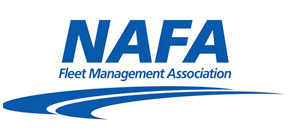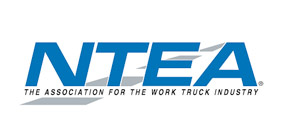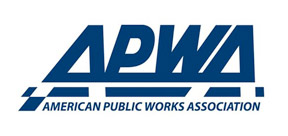Several cities offer e-waste collections for residents

With our increasing use of gadgets, as well as constant encouragement to upgrade our phones, laptops and tablets, our electronic waste is piling up in our homes and businesses. According to the World Health Organization, in 2022, an estimated 62 million tons of e-waste was produced globally, and that number has increased each year since 2014 when e-waste data started being collected. Only 22.3% of e-waste was documented as being formally collected and recycled.
E-waste contains a mixture of valuable materials that could be reused if properly recycled and toxic materials like lead, mercury and cadmium — dangerous to humans, animals and the environment. Countries that generate the most e-waste, according to www.theroundup.org, are China, the United States and India. Europe tops the list for having the highest percentage of recycling e-waste.
Aside from benefits to the environment, recycling e-waste is reportedly a lucrative market because it contains scarce and valuable raw materials like gold, silver, copper and iron. According to an article on www.theroundup.org, titled “Latest Global E-Waste Statistics and What They Tell Us,”the market was valued at $49,880 million in 2020 and is projected to almost triple to $143,870 million by 2028. The article stated recycling just 1 million used cellphones could recover as much as 772 pounds of silver, 35,000 pounds of copper, 75 pounds of gold and 33 pounds of palladium. And cellphones are in a lower category of recycled e-waste items.
The good news is that many cities across the U.S. offer e-waste collection programs, and both cities The Municipaltalked to said they wished they could do more because the need and the demand exists. Director of Public Works for the city of Lynchburg, Va., Gaynelle Hart, said the city has been offering e-waste collections along with hazardous waste collections since 2000, about 25 years.
Hart said, “At the time we started, we had our own landfill and solid waste division so there was a safety and environmental person that took charge of it, so that’s how it was created.”

Now the city of Lynchburg has three household hazardous waste and e-waste collection days in April, June and October. She said the city collects the waste for about a half day, and it usually takes about 15 employees to set up and handle the traffic flow. Lynchburg has one lane for those dropping off e-waste, one lane for hazardous waste and one lane for those who need to pull over and fill out forms. Employees unload the e-waste and hazardous waste while the customers stay in their vehicles.
Hart said when it comes to e-waste they tell residents, “Anything with a cord — vacuum cleaners, laptops, etc.”
Lynchburg has a contract with a company that recycles the e-waste, so they place the items in dumpsters, and the contractor comes and hauls it away. Hart said with the three collection dates, the city services about 700 to 750 people annually, including both e-waste and hazardous waste. She said the e-waste collection days are “very well received by the citizens.”
Hart said, “If I could do best practices, we’d have a convenience center where residents could bring their waste on a regular basis, but we don’t have the resources.”
Lynchburg has a convenience center for household waste and brush, and it is open Tuesday-Saturday. “Ideally, it would be great to have it for e-waste, but we don’t have the staff or the space,” she said.
Hart offered this piece of advice to those thinking of starting e-waste collections. “Start small — what your staff can handle. Maybe start with once a year. There are plenty of contractors out there to help you get rid of the waste, so shop around.”
Salina, Kan.
Salina has a population of about 46,800 people, and the city has been offering an annual e-waste collection for 17 years. According to Brent Curtis, the environmental, education and enforcement coordinator — also known as E-3 coordinator — the program started in 2009.

“It was something the city of Salina was looking into and then a neighboring county received a grant, and they needed a partner and asked if we wanted to partner with them, so the first three years, it was done with a grant,” he said. “After that, we had enough of a positive response from the public we decided to take it on ourselves and keep it going by funding it ourselves.”
Salina generally holds the e-waste collection from 9 a.m. to 1 p.m. on the first Saturday in May, and it sends out requests for bids with local recyclers and the lowest bid gets the contract. Curtis said this year was “unique as they didn’t charge us anything. The only expense we had was advertising the event, so it was about $1,800.”
Over the last five to six years, he estimated the city paid about $9,500. Curtis said the city works with a local company called Teknix Solutions out of Manhattan, Kan., and it takes all the materials to its facility and sorts it. The company takes out what it can reuse — like computer parts and any precious materials. Teknix Solutions sends unusable materials to another recycler. Curtis said Salina averages 23 tons of e-waste in four hours.
“We open at 9 a.m., and they started lining up at 8 a.m.,” he said. “It goes pretty steady the first three hours and then there’s another rush right before we close, so it goes pretty quick.” As an added touch, Salina also accepts food donations for the Salina Emergency Aid Food Bank.
While Salina collects a lot, it wants to collect even more.
“We’re not satisfied. We’re currently investigating doing it year-round. We get enough requests from the public saying they wish we’d do it more often. We are always getting calls weekly. So, we’re looking at feasibility.”
For the city’s regular recycling program, it has a drive-through facility that is single-stream. Three employees operate it from 8:30 a.m. to 6 p.m. Wednesday through Saturday. Residents drive through without getting out of their car, and the employees unload the items. He said if workers can’t accept the material, “We educate them as to why not. Most people are in and out within five minutes.”
He said Salina usually collects 700 to 800 tons of regular recycling in a year.

If Salina had an e-waste facility, Curtis said, “Anything we do would be city run. That’s why we’re looking at feasibility for e-waste. Maybe we’d do the initial collecting and contract out the sorting, but we’re in the very early stages.”
Curtis said the city tells people, “Anything with a cord or batteries is e-waste — hair dryers, toasters, microwaves — all the way up to air conditioners and refrigerators,” but because of the size of those items, not every place takes them.
Media like compact discs and old cassette tapes are not e-waste, nor are light bulbs, but those can be disposed of as hazardous waste. “We have ways of getting rid of anything — if we can divert items from the landfill, we do our best to do it,” he said.
He also shared when people call with questions about their items, the first thing workers ask them is: “Does it work? If so, then donate it to Goodwill or Disabled Veterans — someone can use it. If it doesn’t work, then recycle it.”
Curtis had this advice for other municipalities. “If you’re doing a one-day event, make sure you do it someplace where you have a lot of space.”
Salina used an old airport to handle the traffic, and it allows workers to collect the items easily and quickly. If you don’t have that space, it could really slow things down, especially with unloading larger items.
He also advised to work with a company that is R2 certified, ensuring that they will properly recycle the items and protect data. If the initial contractor isn’t R2 certified, make sure their downstream partner has that certification.
“We used to use a company out of Kansas City, Mo., who was R2 certified, but it also made them more expensive, so if their downstream partner has the certification, that might help it be less expensive,” he said.
Next Article: Recycling events help Renton, Wash., move forward with zero-waste plan


